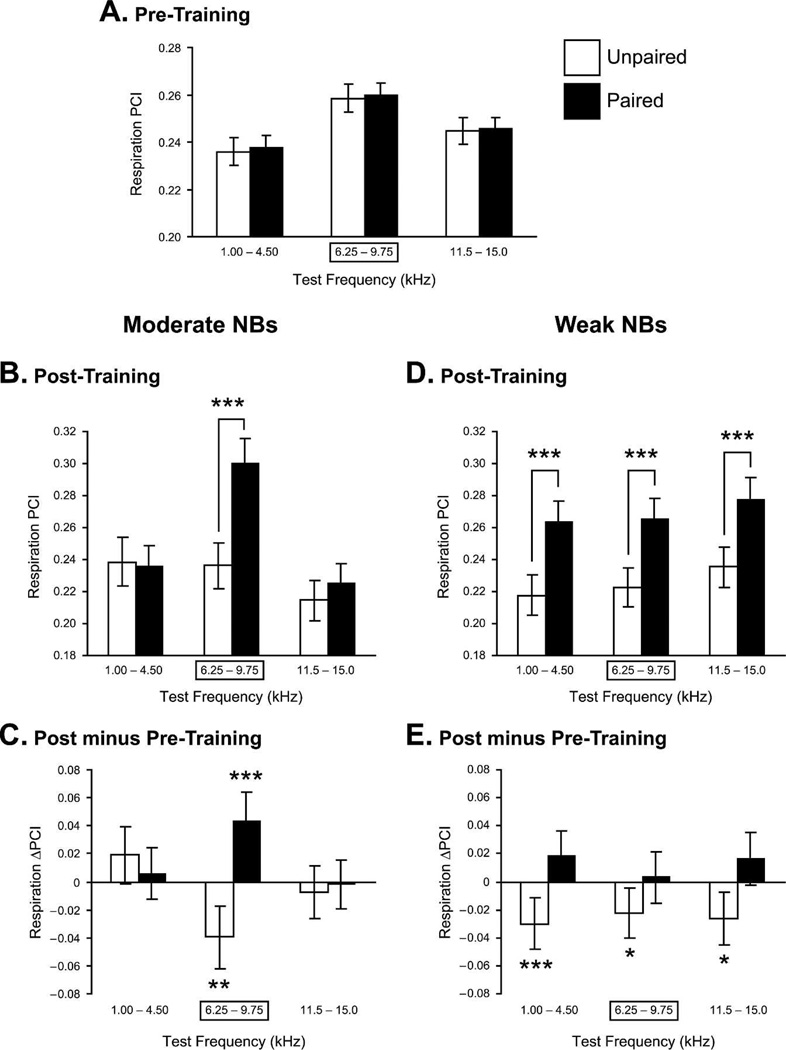Figure 11.
Level of NB stimulation controls specificity of induced memory. Pre-training and post-training responses to test tones in the Moderate and Weak NB stimulation (NBs) groups. (A) Pre-training responses for subjects later trained with either paired or unpaired CS tone and NB stimulation. There were no differences between the groups. (B) Post-training responses for the Moderate NBs groups. Note the significant difference between the paired and unpaired groups, confined to the CS-band frequencies. This indicates that training with a moderate level of NBs produced memory that was both associative and CS specific. (C) Comparisons of changes within the Moderate group (post-minus pre-training responses to test tones). Note that the paired group had developed a significant increase to the CS-band frequencies only, while the unpaired group had developed a significant decrease, probably indicating frequency-specific habituation due to lack of pairing with NB stimulation. (D) Post-training responses for the Weak NBs groups. In contrast to the Moderate NBs group, pairing produced a significant difference in response across all test frequencies compared with its unpaired controls. This indicates that training with weak NBs was sufficient to produce associative memory but insufficient to produce memory for frequency detail, i.e., memory that the frequency of the CS was paired with NBs. (E) Comparisons of changes within the Weak NBs groups showed that the paired group did not develop absolute increased responses, but that the unpaired group did develop significant decreases in responses across the spectrum of test frequencies. Thus, pairing the CS with weak NBs apparently prevented a habituatory decrement in the Weak paired group, which is evident in the Weak unpaired group. *P< 0.05; **P< 0.01; ***P< 0.005.

